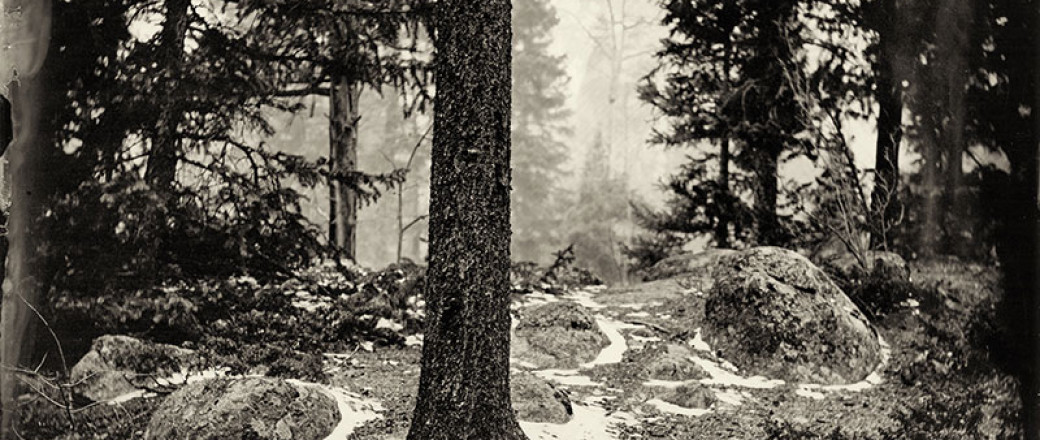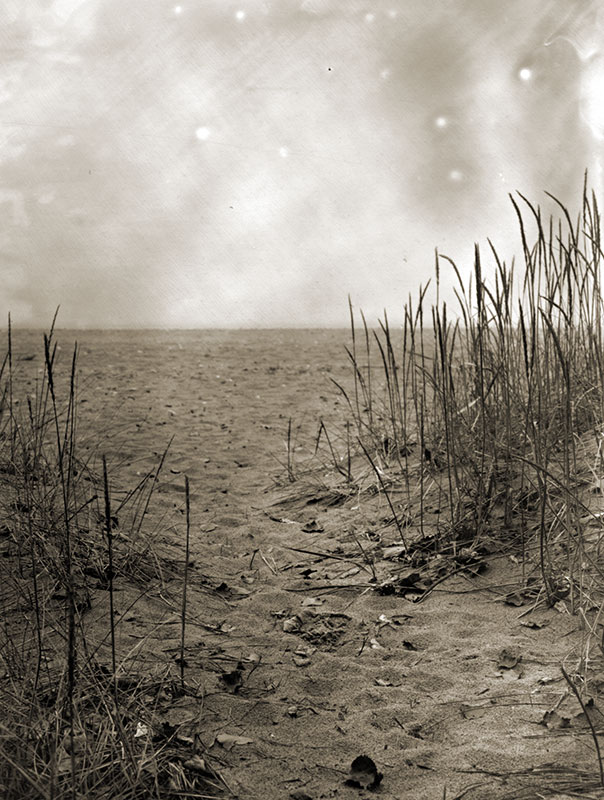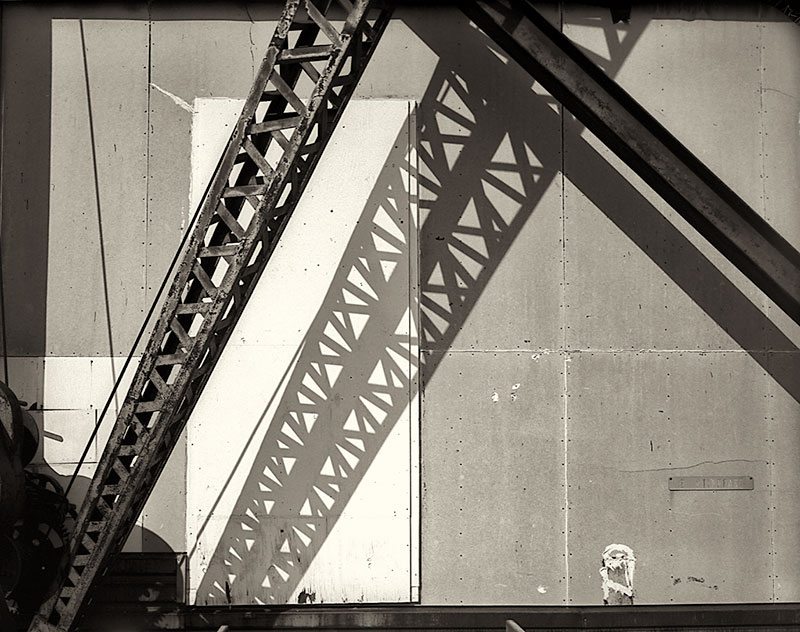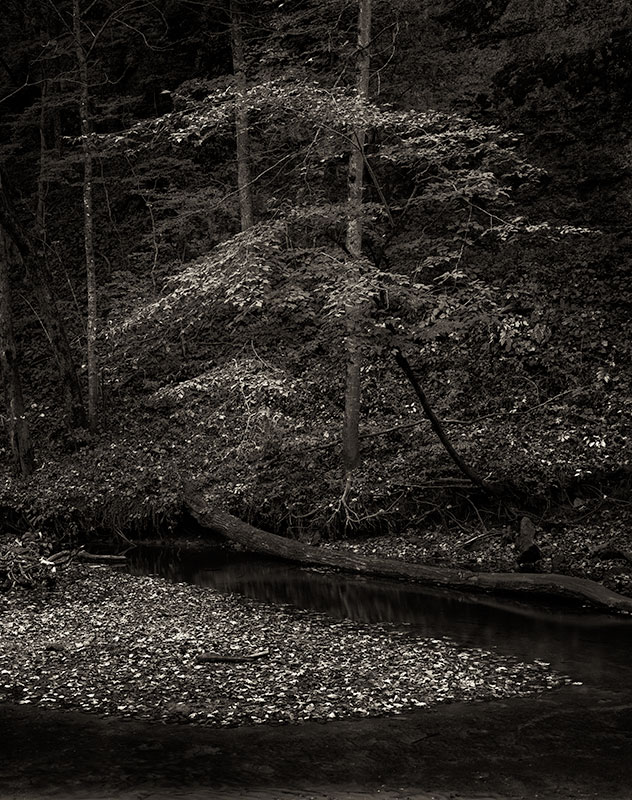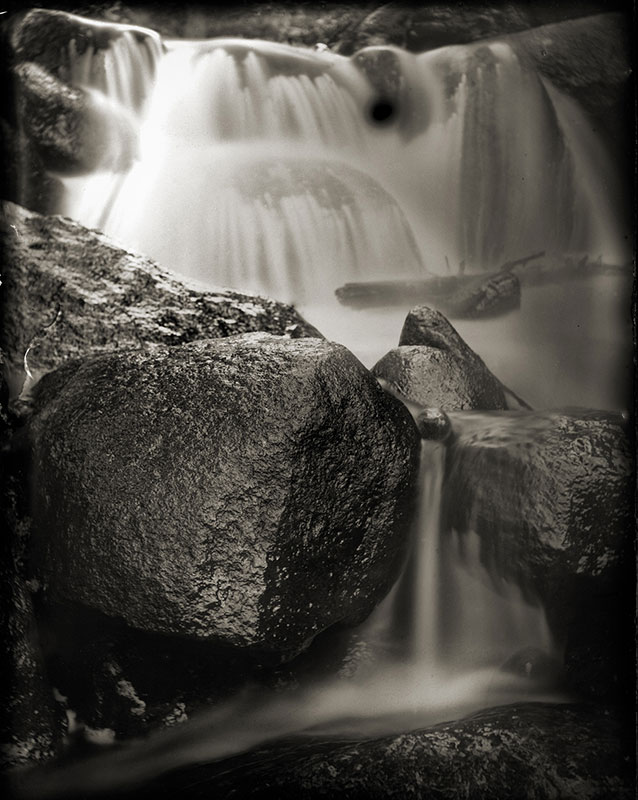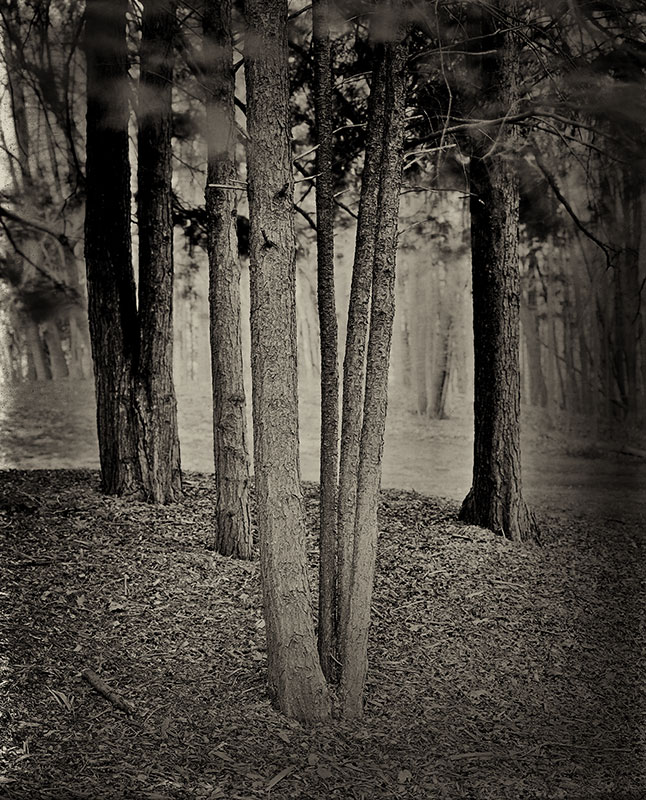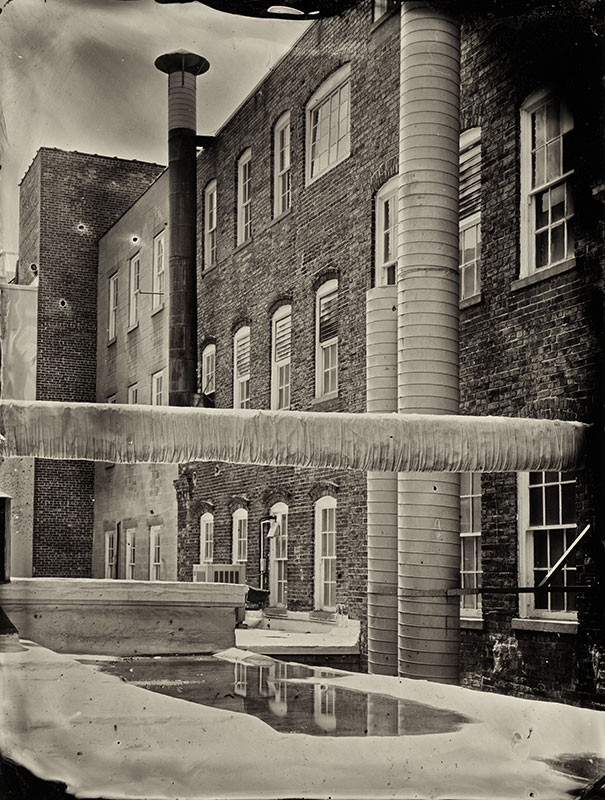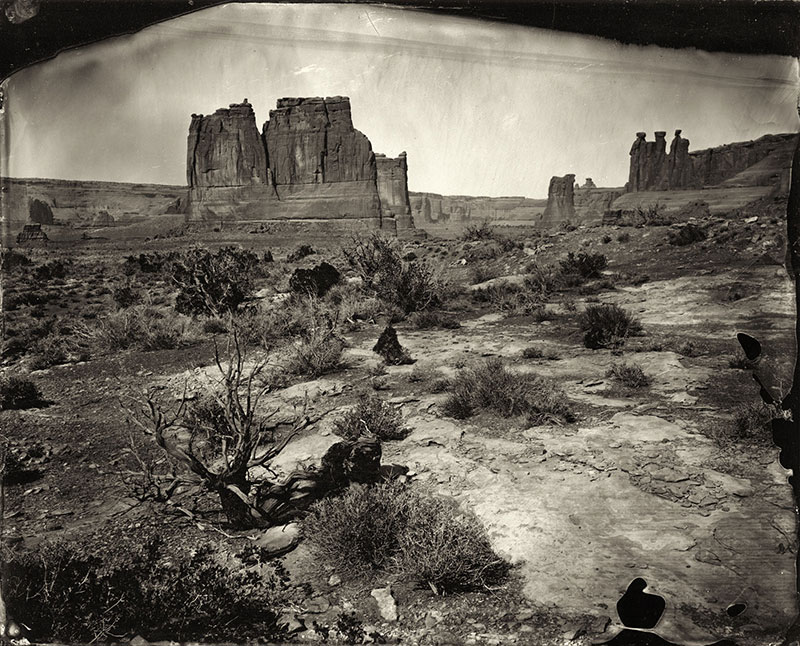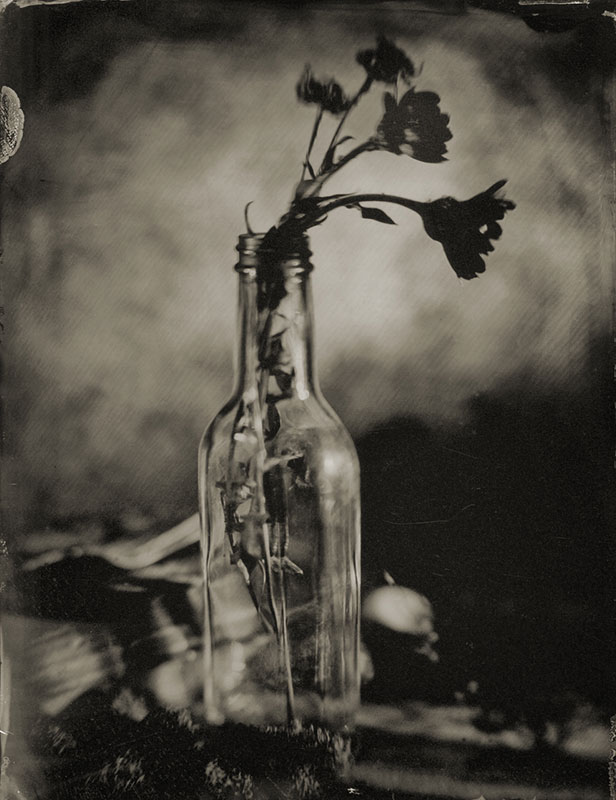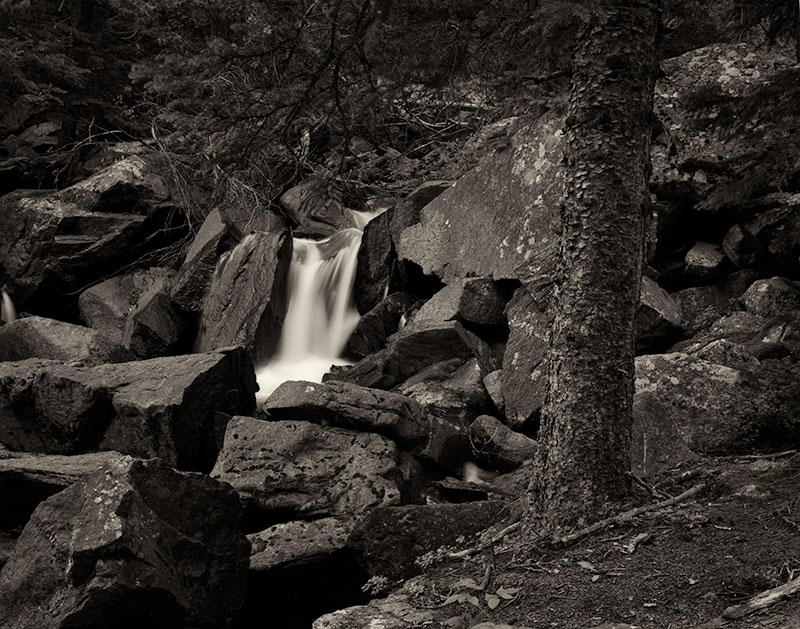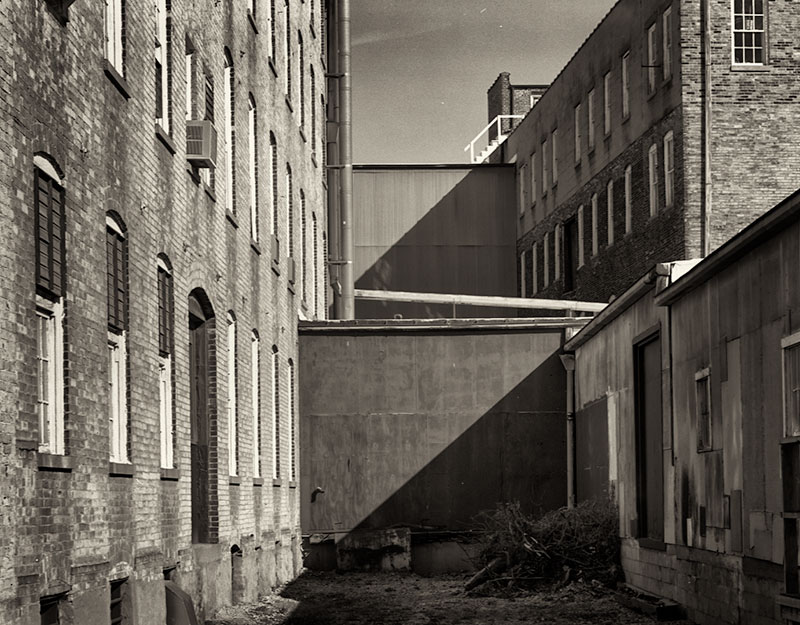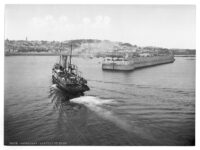Wisconsin fine art photographer Jim Sincock, focuses on large format black and white landscape and fine art still life photography. In his processes he uses traditional film, silver gelatin dry plate (glass negatives) wet plate collodion (aka tintype), digital, and photo encaustic. With his landscape photography, he seeks to provide intimate views of wild and natural places in the American West, the Midwest, and where ever his travels take him. His still life photography is a conversation between camera, light and subject. Juxtaposed objects create their own stories. In 2014, Jim was awarded an Artist Fellowship from the Racine Art Museum, and his landscape and art photography has received other photography awards.
How and when did you become interested in photography?
As a young child I was intrigued with the old photos my grandmother had, I think seeing those really created some interest in photography, and especially the strange quality of the old tintypes and box camera images. I had been very much into drawing and learning painting in my youth, but when I was ten my parents gave me a Minolta SRT-101 camera for my birthday and that really started my interest in the art of photographing.
Is there any artist/photographer who inspired your art?
The early American landscape photographers definitely inspired me, but I’ve also always been inspired by artists ranging from Joseph Cornell, to Mark Rothko to Anselm Kiefer.
What fascinates you in wet plate collodion photography?
I work with wet plate collodion as well as gelatin dry plate and with both of these processes I enjoy the hands-on aspect of literally creating your own film. I also enjoy the look and feel the processes can add to an image. You have the ability to create an image that looks as clean as commercially made film, or it can have imperfections which can add a more hand-made feel to an image. These processes add to the dream-like feel I try to achieve in much of my work.
Why do you work in black and white rather than colour?
Black and white is what feels right for most of my work. I feel it can separate the viewer from reality and help them find a story in the image. B&W helps add to the mood, mystery, and dream-like quality I try to achieve in much of my work. I think it also touches the viewer on a deeper level.
How much preparation do you put into taking a photograph/series of photographs?
The amount of preparation really varies from image to image. I can be very spontaneous when I’m photographing with my medium format Holga or with my 1909 Star Premo quarter plate field camera. Shooting wet plate or 8×10 tend to require more preparation and planning before heading outdoors, or even setting up in the studio. My still life work tends to take a bit more time to put the story together and then set up the shot.
What future plans do you have? What projects would you like to accomplish?
I am currently finishing up a body of work for my fellowship exhibition through the Racine Art Museum. Once that is completed I want to begin a new landscape series as well as a new still life series. For some of my newer work for the museum exhibition, I have branched out into using photo encaustic and mixed media in order to create unique one-of-a-kind pieces. I plan to explore that a bit more as well as continue with my smaller edition silver gelatin or salt prints.
Website: www.jimsincockphotography.com

